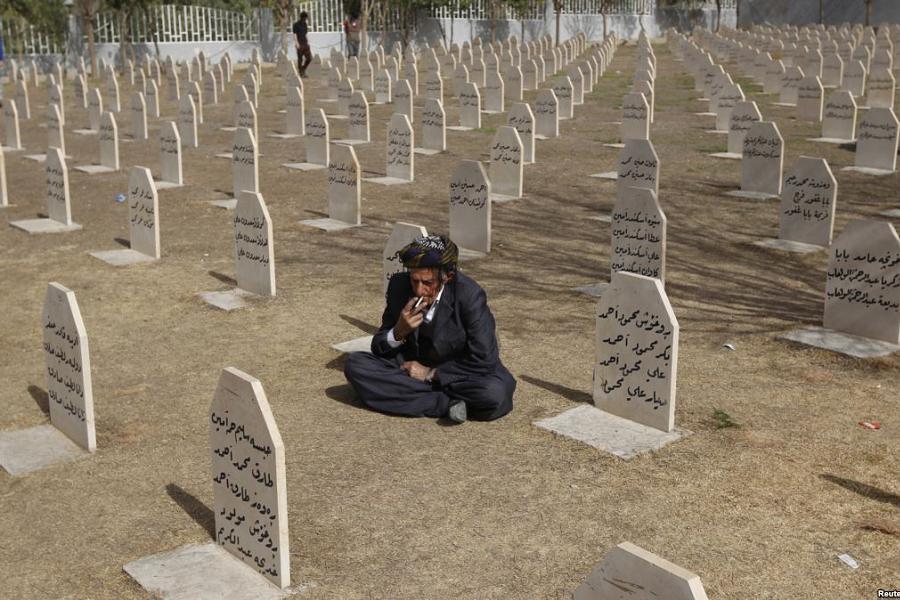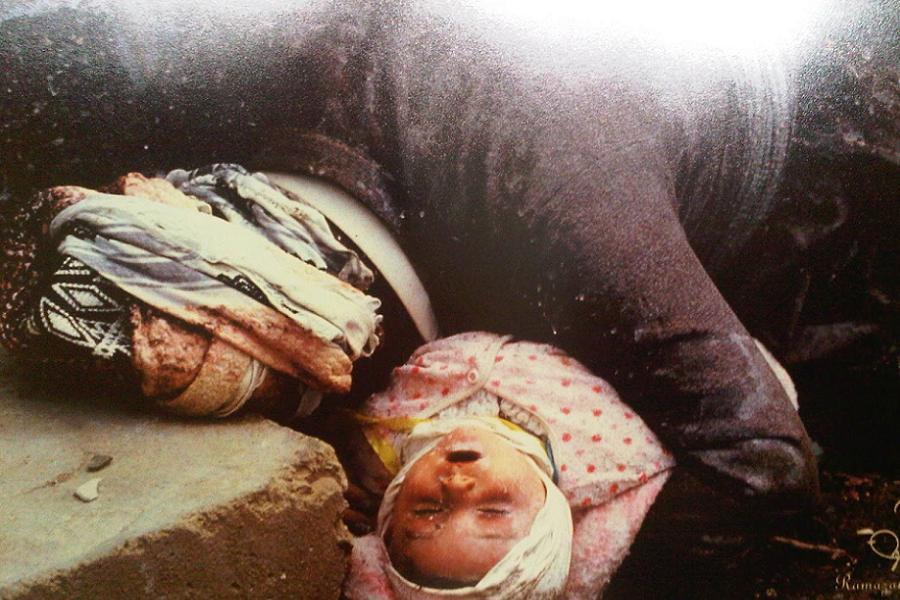The Lesson of Halabja

Wikimedia Commons
Iraqi Kurds would be the focus of another high-profile gas attack in 1988, this time by a local despot named Saddam Hussein. Throughout the 1980s, Hussein’s Iraq had been waging an especially brutal land war against Iran. By 1985, the lines had largely stabilized, and fighting moved to a static, WWI-style battle of attrition. In the north, both sides vied for advantage among the Kurds, who weren’t particularly loyal to either side.
One powerful Kurdish clan, the Barzanis, eventually entered negotiations with Iran for free passage around the Iraqi lines in a large flanking maneuver. The deal never came off, because the Iraqi secret service heard about the negotiations and Hussein decided to send a message.
On the morning of March 16, 1988, the Kurdish town of Halabja, which was then located some distance behind Iranian lines, woke up to a conventional rocket barrage. Frightened civilians took shelter in basements and other low-lying places. This was what the Iraqi planners intended; poison gas is usually heavier than air, so it sinks down into such places and concentrates around the victims.
By early afternoon, with helicopters coordinating the attack, Iraqi planes dropped multiple loads of gas shells on the town. According to one survivor:
“It started with a loud strange noise that sounded like bombs exploding, and a man came running into our house, shouting, ‘Gas! Gas!’ We hurried into our car and closed its windows. I think the car was rolling over the bodies of innocent people. I saw people lying on the ground, vomiting a green-colored liquid, while others became hysterical and began laughing loudly before falling motionless onto the ground. . .
When you hear people shouting the words ‘gas’ or ‘chemicals’ – and you hear those shouts spreading among the people – that is when terror begins to take hold, especially among the children and the women. Your loved ones, your friends, you see them walking and then falling like leaves to the ground. It is a situation that cannot be described – birds began falling from their nests; then other animals, then humans. It was total annihilation.”

Raaaw/YouTube
Survivors of Halabja were airlifted to Tehran, where most were diagnosed with mustard gas exposure. Mustard gas is a blister agent that raises huge lesions on exposed skin, temporarily blinds victims, and permanently scars the respiratory tract.
These were the lucky ones – villagers exposed to nerve gas mostly didn’t live to be evacuated. The idea seems to have been to launch a multi-stage attack, first driving the civilians underground into crowded shelters, then blinding them with blister agents to prevent escape, before finishing them off with the convulsions and heart attacks nerve gas induces. At least 3,200 people died from this attack, though some estimates put the figure closer to 5,000.
Right after the attack, the Iranians flew international journalists into the area to survey the damage. The Iraqis claimed it was a false-flag attack by Iran for propaganda purposes. Nobody really believed this at the time, although the U.S. State Department briefly played along and suggested that Iranian forces were “partly” to blame.
In truth, there was way more than enough blame to go around. Dozens of companies, based in around 20 countries, had sold Iraq everything it needed to make the gas. The lesson of Halabja seems to be that, as long as there’s money in it, plenty of “civilized” people will sell venom to a scorpion like Saddam Hussein.
In the nearly 30 years since Halabja, only the Iraqi scene commander has been executed for the crime. A Dutch businessman was given 15 years for selling restricted chemicals to Iraq. Lawsuits against the American companies involved are stuck in federal-court limbo because the corporations named as defendants have since reorganized and invested in lawyers.





